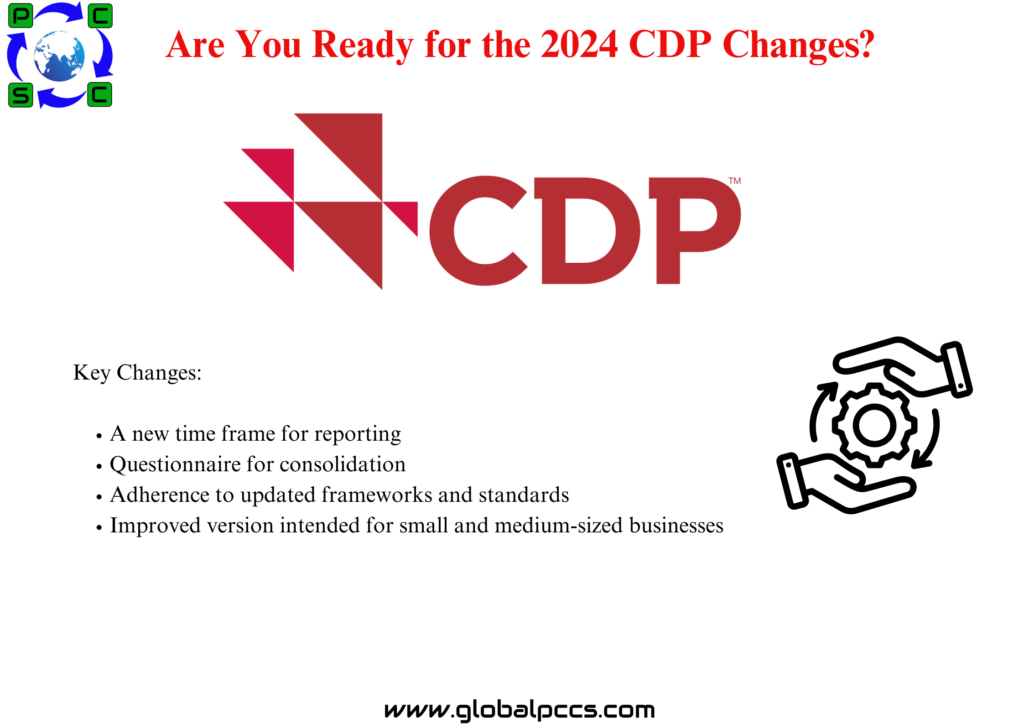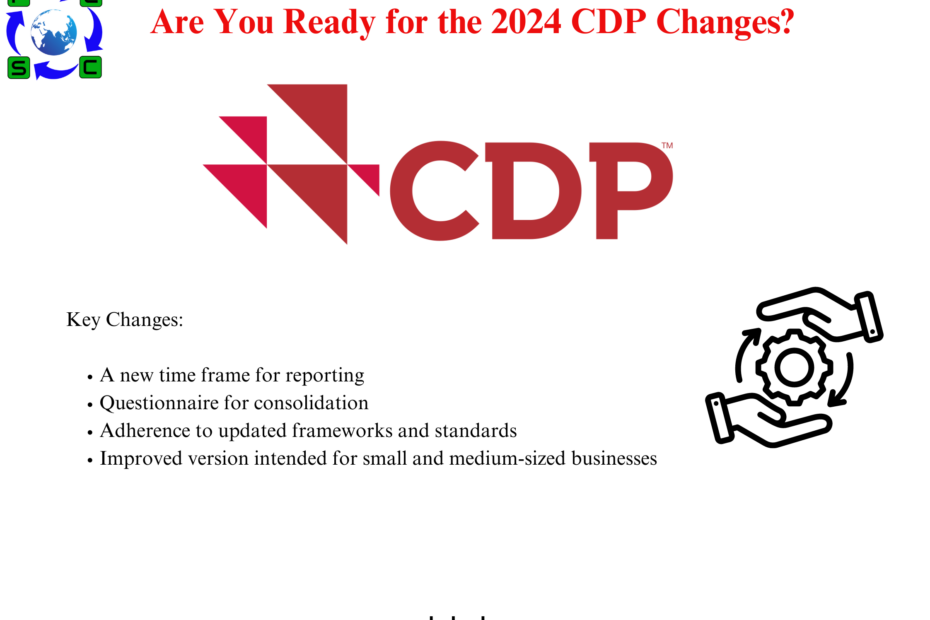 Significant changes to CDP’s reporting method have been announced, and they will affect reporters with the 2024 reporting season. With the addition of plastics as a new issue, the hitherto distinct questionnaires for climate, water, and forests will now be combined into a single integrated reporting framework.
Significant changes to CDP’s reporting method have been announced, and they will affect reporters with the 2024 reporting season. With the addition of plastics as a new issue, the hitherto distinct questionnaires for climate, water, and forests will now be combined into a single integrated reporting framework.
In addition, firms that disclose information will have to learn how to use a new web platform, adhere to a revised deadline, and comprehend an updated grading and reporting guidance system. All things considered, this year’s CDP offers a lot of NEWS!
Key Changes:
- A new time frame for reporting
- Questionnaire for consolidation
- Adherence to updated frameworks and standards
- Improved version intended for small and medium-sized businesses
Key changes for 2024: Part I
CDP’s ambition for corporate environmental action
Key changes to the 2024 questionnaire
Corporates are challenged by CDP’s new questionnaire to take more effective action on a wide range of environmental concerns in order to prioritize saving the environment and the climate. It promotes the assessment and management of dependencies, effects, hazards, and opportunities across ecosystems, including land use, biodiversity, and plastics, as an interconnected issue by disclosers and data consumers.
Mandatory disclosure has now been adopted in Europe, Brazil, India and the UK, and is on track to be implemented in other global jurisdictions very soon. In this rapidly evolving landscape, CDP is also aligning further with emerging reporting frameworks and standards.
These changes, along with a transformation in the CDP Portal technology, will support companies and financial institutions to measure, understand and act on their environmental impacts in line with key disclosure requirements expected by investors and regulators.
Key changes for 2024: Part II
Alignment with disclosure frameworks and standards
By complying with the most pertinent global frameworks and standards and compiling them into a single questionnaire, CDP assists firms in navigating the quickly changing disclosure landscape. By converting standards into queries and data points that can be addressed and used as a basis for action, CDP provides stakeholders and the market with high-quality data in a single dataset.
From 2024, companies will be able to immediately report ISSB-aligned data to their stakeholders and the general public by aligning their CDP disclosure with the ISSB climate standard (IFRS S2). Disclosure via CDP makes it possible for stakeholders around the world economy to access and utilize IFRS S2 disclosure data several times after it is published.
Key changes for 2024
The ‘Identification, Assessment and Management of Dependencies, Impacts, Risks and Opportunities’ is one of the key modules with several new questions. Changes in this module have largely been driven by increased alignment with the TNFD recommendations.
Time horizons
Respondents to climate change are not unfamiliar with this issue, despite it being new in relation to the themes of water, forests, and biodiversity. Businesses should specify their short-, medium-, and long-term time horizons in terms of how they identify, evaluate, and manage the effects, opportunities, risks, and dependencies in their operations, as well as how this influences their financial planning and business strategy.








 Authorised IMDS & CDX Training & Consulting partner for
Authorised IMDS & CDX Training & Consulting partner for





